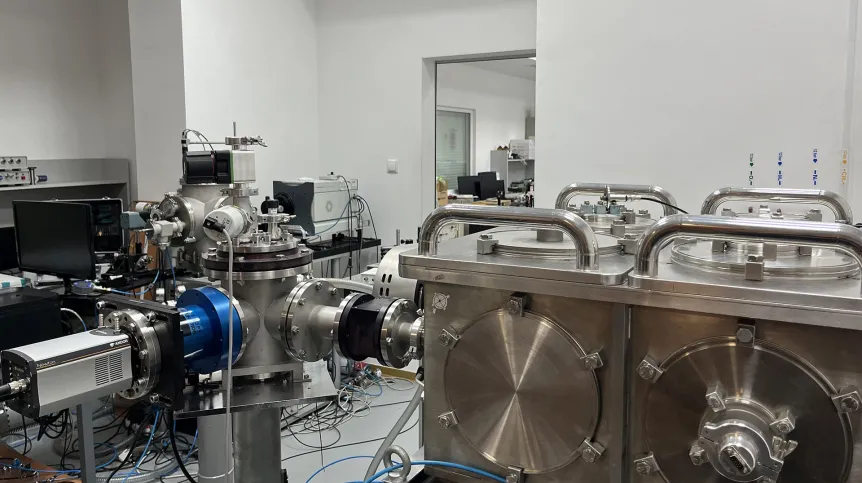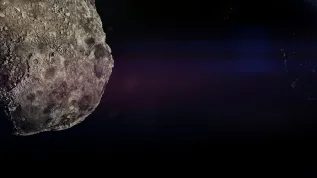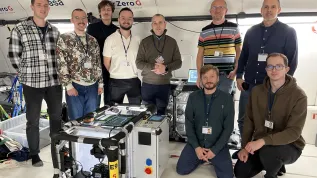
Before Poland’s first fully domestic instrument for studying the solar wind—the GLOWS photometer—was launched into space aboard a NASA mission, it underwent years of precision testing in collaboration with the Military University of Technology (MUT).
Doctoral candidate Martyna Wardzińska from MUT’s Institute of Optoelectronics told the Polish Press Agency that her research group played a crucial role in verifying the photometer’s optical components before the launch.
“In space missions, photometers are used to determine the brightness of astronomical objects. The sensor records the intensity of electromagnetic radiation, or simply light, reaching it. The Polish GLOWS photometer will observe the fluorescent heliospheric glow in the Lyman-alpha line of neutral hydrogen. This light has a wavelength of ~121.6 nanometers and falls within the vacuum ultraviolet range, invisible to the human eye,” Wardzińska said.
She added that “for the designed instrument to function in space, the operation of its components had to be verified in the laboratory.”
PLASMA ALLOWS TO STUDY WHAT IS INVISIBLE TO THE EYE
The GLOWS photometer was developed by scientists and engineers from the Space Research Centre of the Polish Academy of Sciences (CBK PAN), but its optical parts required specialised testing that could only be performed at MUT’s Laser-Matter Interaction Group, which has a laboratory capable of generating vacuum ultraviolet (VUV) radiation.
“This equipment is primarily a laser-plasma source,” Wardzińska said. “It focuses a high-energy light beam onto a gas ‘target’ using a lens. This results in the creation of plasma emitting light in the VUV range, meaning light that is ‘invisible’ to the human eye. Such measurements must be performed in vacuum chambers because Lyman-alpha radiation is strongly attenuated in air.”
She added that every internal element of the photometer had to be engineered to eliminate optical interference. “The interior of the photometer must be covered with a strongly blackened, absorbing material. This is necessary to limit other, unwanted wavelengths from reaching the detector. To this end, we measured scattering from blackened samples made of the same material as the interior of the photometer (Acktar Magic Black). We also verified the transmission of filters that only transmit radiation at a wavelength of 121.6 nanometers (Teledyne Acton Optics filters),” Wardzińska said.
She included these measurements and analyses in her doctoral dissertation, prepared under the supervision of Brigadier General Professor Przemysław Wachulak, Rector-Commander of MUT. The tests were carried out over several years between 2020 and 2024.
EXCITING ROCKET LAUNCH WITH POLISH RESEARCH INSTRUMENT
On September 24, NASA launched its heliospheric research probe from the Kennedy Space Center in Florida, carrying the Polish-built GLOWS instrument aboard a Falcon 9 rocket.
“On the day of the rocket launch, my entire team and I tuned in to the official live stream of the mission launch. We were excited to watch the successful launch; I encourage you to watch it—the video is still available,” Wardzińska said. “The measurements of the GLOWS photometer components were very time-consuming and required precision, but despite the challenges, we did not forget that our work would contribute to the operation of the Polish research instrument in space. This gives a researcher great satisfaction.”
Wardzińska praised the cooperation between MUT and CBK PAN. “The measurements of the photometer components certainly paved the way and laid the foundation for future activities, should the opportunity arise,” she said. “Additionally, space and satellite engineering students from the Institute of Optoelectronics at the Military University of Technology participate in classes taught by scientists from the Space Research Centre PAS and have the opportunity to complete their theses there. The result of our collaboration is a jointly published paper, and more are in preparation.”
HELIOSPHERE AND THE INFLUENCE OF THE SOLAR WIND ON EARTH
The doctoral candidate also highlighted the broader scientific goals of the GLOWS mission. “The solar wind influences phenomena in space, including the planets’ magnetic fields. On Earth, its effects include the auroras. Interacting with neutral hydrogen in the Solar System, the solar wind emits radiation in the Lyman-alpha line. However, this radiation cannot be studied from Earth’s surface because it is absorbed by the atmosphere,” she said.
“The solar wind can influence geomagnetic storms, which can disrupt various systems in areas as important to each of us as navigation and communication,” Wardzińska added.
The results of the MUT-CBK collaboration were published in the Journal of Astronomical Telescopes, Instruments, and Systems.
The authors include Marek Strumik, PhD; Martyna Wardzińska; Maciej Bzowski, PhD, professor at CBK PAN and head of the GLOWS team; Professor Przemysław Wachulak; Roman Wawrzaszek, PhD; Tomasz Fok; Andrzej Bartnik, PhD, professor at MUT and head of the Laser Technology Department; Karol Mostowy; Professor Henryk Fiedorowicz, head of the Laser Radiation-Matter Interaction Group; Łukasz Węgrzyński, PhD; and Mateusz Majszyk.
Currently, Jakub Mądry, a graduate of the Military University of Technology, is continuing the work at CBK PAN. (PAP)
PAP - Science in Poland, Karolina Duszczyk
kol/ bar/
tr. RL













